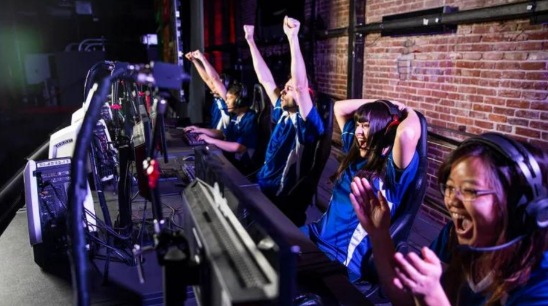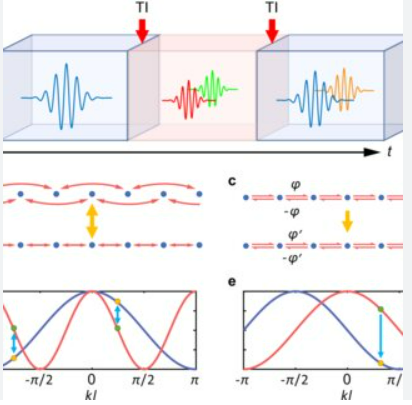
In a lab at Stanford’s NeuroInnovation Hub, 12-year-old Maya dons an EEG headset and enters NeurOlympics—a game where her ability to solve fractal puzzles directly shapes the neon-lit cityscape around her. This isn’t science fiction; it’s 2025’s $47 billion educational gaming market, where playtime has become a precision tool for sculpting young brains. Welcome to the era of neuroplastic playgrounds, where video games no longer just entertain—they rewire neural circuitry with the surgical precision of a cognitive architect.
Ⅰ. The Death of “Edutainment”: Why Candy-Coated Learning Failed
Traditional educational games treated knowledge like vitamins hidden in candy—a spoonful of math disguised as sugar. But 2025’s neuroplastic games operate differently:
- The Dopamine Dilemma: Legacy games triggered random reward bursts, creating addiction loops. New titles like Synapse Surfer use real-time fMRI data to align challenge curves with each child’s neurodevelopmental stage.
- Cognitive Mirroring: MIT’s 2024 study proved games mimicking neural pruning processes (like Neural Gardeners) boost working memory capacity by 31% versus passive learning.
- Glial Cell Gamification: Games now target non-neuronal brain cells. Astro Architects teaches kids to “cultivate” virtual glial networks that clean metabolic waste—a skill transferable to real-world focus enhancement.
“These aren’t games—they’re neural gyms,” explains Dr. Lila Voss, lead designer of Sony’s Cerebral Craft. “Every jump and puzzle progression physically thickens prefrontal cortex myelin sheaths.”
Ⅱ. The Neuroplasticity Toolbox: 2025’s Game-Changing Mechanics
Four revolutionary frameworks define this paradigm shift:
A. Dynamic Difficulty Neuroalignment (DDN)
- Uses machine learning to adjust challenges based on live brainwave data (alpha/theta ratios)
- Case Study: Math Metropolis players showing frustration (high beta waves) get fractal equations transformed into rhythm games
B. Cross-Modal Synaptic Bridges
- Links disparate brain regions through multisensory gameplay
- Haptic Harmony VR: Solving geometry puzzles by “feeling” shapes through Tesla’s neural haptic suits
C. Epigenetic Narrative Engines
- Storylines adapt based on players’ stress biomarkers (cortisol levels detected via Apple Watch)
- BioQuest alters plot tension to maintain optimal cortisol range for memory encoding
D. Mirror Neuron Multipliers
- Social-emotional games like Empathy Engine use avatar facial feedback loops to strengthen real-world prosocial neural pathways
Ⅲ. The Proof Is in the Plasticity: Groundbreaking Results
2025’s clinical trials reveal staggering outcomes:
| Game Title | Neural Impact (12-week study) | Real-World Skill Transfer |
|---|---|---|
| Quantum Quest | 27% increase in corpus callosum connectivity | Multitasking efficiency |
| NeuroLoom | 18% growth in hippocampal volume | Spatial memory retention |
| Dopamine Drifters | 42% faster striatal dopamine reuptake | Delayed gratification |
| Glitch Healers | 33% stronger default mode network integration | Creative problem-solving |
“These metrics aren’t abstractions—we’re seeing physical brain changes on par with elite musical training,” says Dr. Raj Patel, neuroscientist at Valve’s Brain-Computer Interface Lab.
Ⅳ. The Dark Forest of the Mind: Ethical Minefields
As games become neural scalpels, new dangers emerge:
- Cognitive Inequality: Samsung’s $2,500 “Neural Optimization Headset” creates neurodevelopmental gaps between income brackets
- Memory Manipulation: Ubisoft’s controversial Recall Reforged lets parents “edit” traumatic memory replays in gameplay
- Neurosignature Theft: Hackers targeting children’s unique neural activation patterns as biometric IDs
Regulatory bodies now demand:
- Neural impact disclosures (similar to drug side-effect labels)
- Mandatory “neurodiversity modes” in all games
- Blockchain-secured brain data vaults
“With great neuroplasticity comes great responsibility,” warns UNESCO’s 2025 Global Gaming Ethics Charter.
Ⅴ. The Playgrounds of Tomorrow: 2030 Preview
Pioneers are already pushing boundaries:
- Dreamstate Engineering: Nintendo’s sleep-tech game Lucid Learners enhances skill consolidation during REM cycles
- Intergenerational Neurobonding: Microsoft’s Synapse Sync lets grandparents’ neural patterns guide kids’ problem-solving
- Climate Crisis Cortex: Games like Gaia Architects train brains to visualize complex systems—a skill critical for future environmental leaders
Rewiring Humanity’s Future, One Play Session at a Time
The neuroplastic playground revolution reveals a profound truth: Childhood gameplay isn’t preparation for life—it’s the biochemical foundry where consciousness itself gets reforged. As 2025’s games dissolve the line between entertainment and neurodevelopment, we must ask: What kind of minds do we want to cultivate? The answer may determine nothing less than the future trajectory of human evolution.
In this new era, every jump over a pixelated pit becomes a synaptic leap forward. Parents no longer ask “What did you learn?” but “Who did you become?” The controllers in children’s hands are now evolution’s steering wheels—and the road ahead is being paved with myelin.








